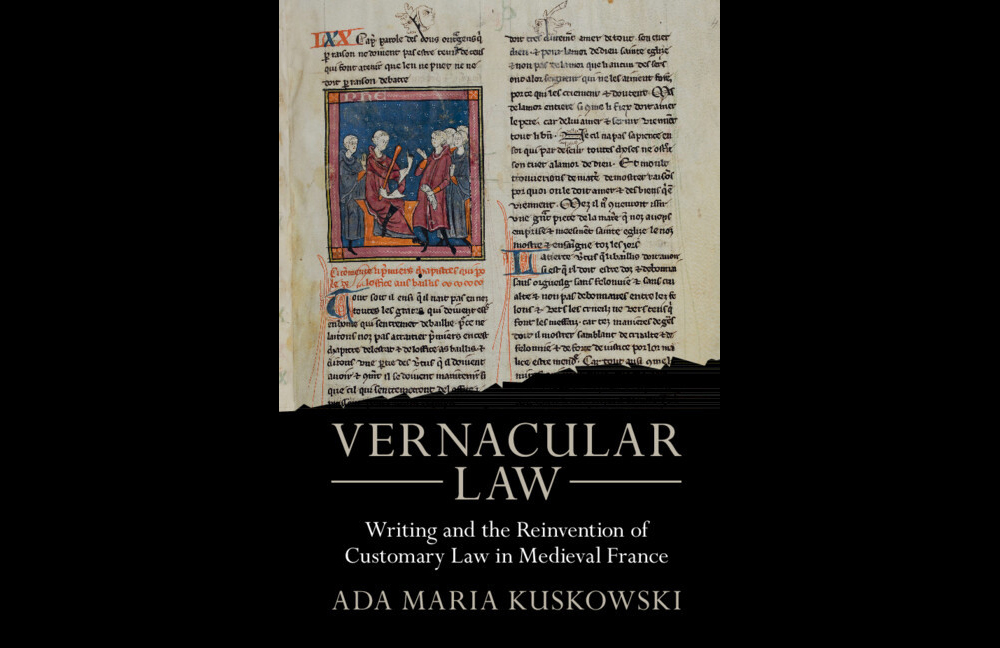How did you become interested in this topic?
I came to this topic through my love of medieval European history and a fascination with the formation of legal cultures. The medieval period may be the most misrepresented period in history. For so long, it was described unidimensionally as a dark and primitive foil to an enlightened and progressive modernity. Studying it is a constant process of discovery not only because it turns out to be not the opposite of what happens next but formative of it, but also because we learn so much about modernity through its invented pasts.
Law is so fundamental to society, politics, and culture. My curiosity about how legal knowledge is constructed and how different legal cultures develop goes back to my law school days at McGill University in Canada, where we learned Anglo-American common law and Continental civil law simultaneously. Seen side by side, legal systems are clearly forms of culture shaped by history, tradition, innovation, and happenstance. I want to understand what makes legal cultures what they are in their early, most formative moments.
In ‘Vernacular Law,’ I explore the transformation of customary law from informal practice to written text. Medieval customary law tends to be seen as nameless, aggregate, and synonymous with tradition; it is defined by a popular consensus that emanates from social practices over long periods of time. However, through lawbooks composed in 13th century France, known as coutumiers, I show that customary law was not only the product of mass social forces expressed in popular practices but also the product of individual thought, innovation, and craft.
Why was it important that this effort was made? How was it a steppingstone to transforming the field?
While legislation was ever increasing from the 12th century on, it was custom that was central to legal practice in lay courts (as opposed to church courts). Whether it was an issue of property, inheritance, contact, or crime, courts asked not ‘what is applicable law?’ but ‘what is the custom?’ Assumptions about the traditionalism of medieval society and of customary law have made it seem that custom was necessarily obvious and well-known and easily transcribable into written form.
Certainly, sometimes legal practices were well-established and well-known, but they could also be unclear, uncertain, and contradictory, and new issues came up commonly. Knowledge of custom was scattered in individual memories and perceptions, archival documents recording individual transactions, limited legislation, and nascent records of court proceedings. Taking all of this and turning it into a body of comprehensive rules was not obvious at all; it was an innovative act of the imagination.
That this was something new is so well captured by one of the authors, Pierre de Fontaines, who asked his readers to forgive him if something was off because nobody had done this before and he was working without a model. Before these sorts of law books, available legal learning was in Latin, acquired by many years of university study, and focused on the law of the church and late-antique Roman law. The authors of customary law combined their own learning, court experience, and critical thought to transform disparate legal practices into a new legal literary genre that presented these in the vernacular and as a cohesive ‘customary law.’ Lay people, who had long participated in judicial processes, gained a new way to interact with legal ideas, a new ability to shape or be shaped by them, and a new ability to exchange and transmit them.
What is the most important thing to understand about this change?
The inscription of law—from the Ten Commandments to the U.S. Constitution—is often a powerful formative moment in the lives of societies, one that captures the energy of change in a new and better direction. Customary law tends to have an opposite narrative. It has no particular moment but a long time or even timelessness, it has no individuals but communities, and it looks backwards and is associated with tradition rather than change. ‘Vernacular Law’ tells a different story: Medieval customary law, commonly seen as traditionalist community norm repeated by rote, emerges also as a product of individual craft and a law of dynamic innovation.
As Pierre suggested, it was no obvious thing to write down customary law. But thanks to texts like the coutumiers, it became an obvious thing to think about customary law not in terms of disparate practices but as a body of rules. In France, these texts created a lasting genre that led to official versions that persisted till the Revolution, until the Civil Code of 1804.
If customary law is not all stagnant traditionalism, then we need to rethink the difference between custom and legislation and why the former was eclipsed while the latter became largely synonymous with law. The medieval authors who composed customary law tell an important story about the dynamic formation of legal knowledge in societies deemed traditional, the ability of medieval thought to be creative and expansive, and how the present shapes the past and the past shapes the present.









